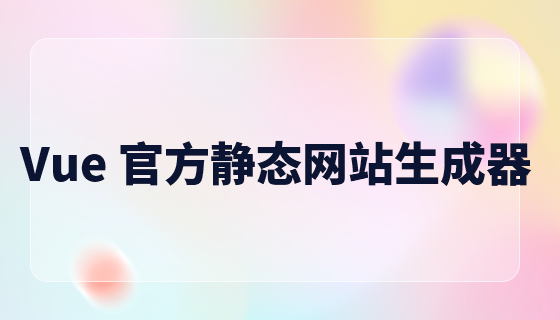
使用 vue.js 前端和 python 后端创建完整的区块链应用程序。
让我们概述基本组件并提供一些示例代码片段来帮助您入门。
pip install flask
# blockchain.py
import hashlib
import json
from time import time
from flask import flask, jsonify, request
class blockchain:
def __init__(self):
self.chain = []
self.current_transactions = []
self.new_block(previous_hash='1', proof=100)
def new_block(self, proof, previous_hash=none):
block = {
'index': len(self.chain) + 1,
'timestamp': time(),
'transactions': self.current_transactions,
'proof': proof,
'previous_hash': previous_hash or self.hash(self.chain[-1]),
}
self.current_transactions = []
self.chain.append(block)
return block
def new_transaction(self, sender, recipient, amount):
self.current_transactions.append({
'sender': sender,
'recipient': recipient,
'amount': amount,
})
return self.last_block['index'] + 1
@staticmethod
def hash(block):
block_string = json.dumps(block, sort_keys=true).encode()
return hashlib.sha256(block_string).hexdigest()
@property
def last_block(self):
return self.chain[-1]
app = flask(__name__)
blockchain = blockchain()
@app.route('/mine', methods=['post'])
def mine():
values = request.get_json()
required = ['proof', 'sender', 'recipient']
if not all(k in values for k in required):
return 'missing values', 400
index = blockchain.new_transaction(values['sender'], values['recipient'], values['amount'])
blockchain.new_block(values['proof'])
response = {
'message': f'new block forged',
'index': index,
'block': blockchain.last_block,
}
return jsonify(response), 200
@app.route('/chain', methods=['get'])
def full_chain():
response = {
'chain': blockchain.chain,
'length': len(blockchain.chain),
}
return jsonify(response), 200
if __name__ == '__main__':
app.run(debug=true)
第 2 步:设置前端
vue create my-blockchain-app
npm install axios
// src/components/blockchain.vue
<template>
<div>
<h1>blockchain</h1>
<button @click="fetchchain">fetch blockchain</button>
<ul>
<li v-for="block in blockchain" :key="block.index">
block #{{ block.index }} - {{ block.timestamp }}
</li>
</ul>
</div>
</template>
<script>
import axios from 'axios';
export default {
data() {
return {
blockchain: []
};
},
methods: {
fetchchain() {
axios.get('http://localhost:5000/chain')
.then(response => {
this.blockchain = response.data.chain;
})
.catch(error => {
console.error(error);
});
}
}
};
</script>
运行 flask 后端:确保您的 python 服务器正在运行:
python blockchain.py
运行 vue.js 前端:现在,运行您的 vue.js 应用程序:
npm run serve
让我们通过添加更多高级功能来增强区块链应用程序,例如:
# blockchain.py
import hashlib
import json
from time import time
from flask import flask, jsonify, request
from urllib.parse import urlparse
import requests
class blockchain:
def __init__(self):
self.chain = []
self.current_transactions = []
self.nodes = set()
self.new_block(previous_hash='1', proof=100)
def new_block(self, proof, previous_hash=none):
block = {
'index': len(self.chain) + 1,
'timestamp': time(),
'transactions': self.current_transactions,
'proof': proof,
'previous_hash': previous_hash or self.hash(self.chain[-1]),
}
self.current_transactions = []
self.chain.append(block)
return block
def new_transaction(self, sender, recipient, amount):
self.current_transactions.append({
'sender': sender,
'recipient': recipient,
'amount': amount,
})
return self.last_block['index'] + 1
@staticmethod
def hash(block):
block_string = json.dumps(block, sort_keys=true).encode()
return hashlib.sha256(block_string).hexdigest()
@property
def last_block(self):
return self.chain[-1]
def proof_of_work(self, last_proof):
proof = 0
while not self.valid_proof(last_proof, proof):
proof += 1
return proof
@staticmethod
def valid_proof(last_proof, proof):
guess = f'{last_proof}{proof}'.encode()
guess_hash = hashlib.sha256(guess).hexdigest()
return guess_hash[:4] == "0000" # adjust difficulty here
def register_node(self, address):
parsed_url = urlparse(address)
self.nodes.add(parsed_url.netloc)
def resolve_conflicts(self):
neighbours = self.nodes
new_chain = none
max_length = len(self.chain)
for node in neighbours:
response = requests.get(f'http://{node}/chain')
if response.status_code == 200:
length = response.json()['length']
chain = response.json()['chain']
if length > max_length and self.valid_chain(chain):
max_length = length
new_chain = chain
if new_chain:
self.chain = new_chain
return true
return false
def valid_chain(self, chain):
last_block = chain[0]
current_index = 1
while current_index < len(chain):
block = chain[current_index]
if block['previous_hash'] != self.hash(last_block):
return false
if not self.valid_proof(last_block['proof'], block['proof']):
return false
last_block = block
current_index += 1
return true
app = flask(__name__)
blockchain = blockchain()
@app.route('/mine', methods=['post'])
def mine():
values = request.get_json()
required = ['sender', 'recipient']
if not all(k in values for k in required):
return 'missing values', 400
last_block = blockchain.last_block
last_proof = last_block['proof']
proof = blockchain.proof_of_work(last_proof)
blockchain.new_transaction(sender=values['sender'], recipient=values['recipient'], amount=1)
previous_hash = blockchain.hash(last_block)
block = blockchain.new_block(proof, previous_hash)
response = {
'message': 'new block forged',
'index': block['index'],
'block': block,
}
return jsonify(response), 200
@app.route('/transactions/new', methods=['post'])
def new_transaction():
values = request.get_json()
required = ['sender', 'recipient', 'amount']
if not all(k in values for k in required):
return 'missing values', 400
index = blockchain.new_transaction(values['sender'], values['recipient'], values['amount'])
response = {'message': f'transaction will be added to block {index}'}
return jsonify(response), 201
@app.route('/chain', methods=['get'])
def full_chain():
response = {
'chain': blockchain.chain,
'length': len(blockchain.chain),
}
return jsonify(response), 200
@app.route('/nodes/register', methods=['post'])
def register_nodes():
values = request.get_json()
nodes = values.get('nodes')
if nodes is none:
return 'error: please supply a valid list of nodes', 400
for node in nodes:
blockchain.register_node(node)
response = {
'message': 'new nodes have been added',
'total_nodes': list(blockchain.nodes),
}
return jsonify(response), 201
@app.route('/nodes/resolve', methods=['get'])
def consensus():
replaced = blockchain.resolve_conflicts()
if replaced:
response = {
'message': 'our chain was replaced',
'new_chain': blockchain.chain,
}
else:
response = {
'message': 'our chain is authoritative',
'chain': blockchain.chain,
}
return jsonify(response), 200
if __name__ == '__main__':
app.run(debug=true)
第 2 步:增强前端
// src/components/blockchain.vue
<template>
<div>
<h1>blockchain</h1>
<button @click="fetchchain">fetch blockchain</button>
<h2>transactions</h2>
<form @submit.prevent="submittransaction">
<input type="text" v-model="sender" placeholder="sender" required />
<input type="text" v-model="recipient" placeholder="recipient" required />
<input type="number" v-model="amount" placeholder="amount" required />
<button type="submit">send transaction</button>
</form>
<h2>blockchain</h2>
<ul>
<li v-for="block in blockchain" :key="block.index">
block #{{ block.index }} - {{ block.timestamp }}
<ul>
<li v-for="transaction in block.transactions" :key="transaction.sender">
{{ transaction.sender }} -> {{ transaction.recipient }}: {{ transaction.amount }}
</li>
</ul>
</li>
</ul>
</div>
</template>
<script>
import axios from 'axios';
export default {
data() {
return {
blockchain: [],
sender: '',
recipient: '',
amount: 0,
};
},
methods: {
fetchchain() {
axios.get('http://localhost:5000/chain')
.then(response => {
this.blockchain = response.data.chain;
})
.catch(error => {
console.error(error);
});
},
submittransaction() {
const transaction = {
sender: this.sender,
recipient: this.recipient,
amount: this.amount,
};
axios.post('http://localhost:5000/transactions/new', transaction)
.then(response => {
alert(response.data.message);
this.fetchchain(); // refresh the blockchain view
})
.catch(error => {
console.error(error);
});
}
}
};
</script>
您可以通过在不同端口上运行 flask 应用程序的多个实例来测试具有多个节点的区块链。例如,您可以运行:
flask_run_port=5001 python blockchain.py
然后,您可以使用 post 请求注册节点:
curl -X POST -H "Content-Type: application/json" -d '{"nodes": ["localhost:5001"]}' http://localhost:5000/nodes/register
这个更先进的区块链应用程序包括:
-工作量证明:挖掘新区块的基本机制。
-交易池:用户可以在交易被开采之前创建交易。
-节点发现:支持多个节点和共识机制。
-交互式前端:用于提交交易和查看区块链的 vue.js ui。
编码愉快!
立即学习“Python免费学习笔记(深入)”;
以上就是使用 Vue、Python 和 Flask 进行区块链的详细内容,更多请关注php中文网其它相关文章!

每个人都需要一台速度更快、更稳定的 PC。随着时间的推移,垃圾文件、旧注册表数据和不必要的后台进程会占用资源并降低性能。幸运的是,许多工具可以让 Windows 保持平稳运行。




Copyright 2014-2025 https://www.php.cn/ All Rights Reserved | php.cn | 湘ICP备2023035733号